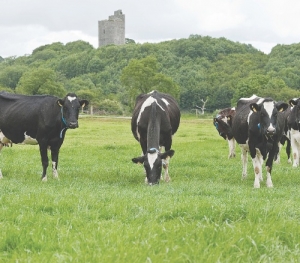Watch a cow eating and you will notice always some of each mouthful falls to the ground uneaten; cows are messy eaters.
Dr Pranoy Pal and colleagues Tim Clough and Frank Kelliher, Department of Soil and Physical Sciences, Lincoln University, call this ‘litter-fall’. They made a study of how litter-fall occurred and its effect on nitrous oxide emissions from pastures. Once fallen from a cow’s mouth, plant parts in the litter-fall either stay on the surface after falling or are trodden into the soil during grazing.
To obtain samples of the litter-fall and the original pasture, Pal marked out 1m2 (quadrats) randomly through a paddock before and after grazing by cows. Once the cows were moved to another pasture Pal used a leaf blower-vacuum machine to collect the litter-fall and calculated the rate of litter-fall. This was later analysed in a laboratory.
“In starting this research, I was relieved to find I was not required to spend days chasing cows around paddocks, trying to hold a bag under each cow in order to collect the litter-fall.”
Litter-fall rates were found to range from 53-72kgDM/ha in a single grazing event – 4-5% wasteage of the expected total consumption of the animals.
Subsequent studies on the Lincoln University dairy farm revealed the fate of the litter-fall and how much decomposed to nitrous oxide on the surface after being walked over by the cows when feeding.
Pal showed that under suitable conditions about 1% of the nitrogen contained in the litter-fall may be transformed to nitrous oxide and emitted to the atmosphere.
• Janette Busch is a science writer with the Faculty of Agriculture and Life Sciences, Lincoln University









